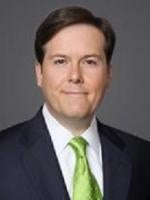After months of suspense and intrigue on whether SECURE 2.0 would make it to the finish line and become law, the U.S. Congress ended the suspense by attaching SECURE 2.0 to the Consolidated Appropriations Act, 2023 funding bill on December 23, 2022. President Biden made it official on December 29, 2022, by signing the appropriations bill into law (Public Law No. 117-328). The SECURE 2.0 Act of 2022 is found in Division T of the legislation and is 130 pages long.
The general theme of SECURE 2.0 is providing more access to retirement plans, providing incentives to employers to provide this access, expanding the ways to obtain these funds from accounts, and ease of administration. In this article on SECURE 2.0, we will focus on the “Top 10” contribution-related provisions that have significant impact on plan sponsors.
1. Plan Amendment Deadline
As is customary with retirement legislation, plan amendments to implement the applicable requirements of SECURE 2.0 are not required immediately. Instead, SECURE 2.0 amendments must be adopted by the end of the “remedial amendment period” ending on the last day of the first plan year beginning on or after January 1, 2025 (this date is December 31, 2025, for calendar year plans). However, the deadline for governmental plans and collectively bargained plans is not until the last day of the first plan year beginning on or after January 1, 2027 (December 31, 2027 for calendar year plans). In order to consolidate the deadlines with SECURE 1.0 and CARES Act amendments and to follow recent Internal Revenue Service (IRS) guidance, the same deadlines also generally apply to SECURE 1.0 and CARES Act amendments.
2. Automatic Enrollment and Automatic Escalation
New 401(k) and 403(b) plans established on or after December 29, 2022, would be required to include:
-
automatic enrollment with a minimum default percentage of 3 percent and a maximum default percentage of 10 percent, and
-
automatic escalation that increases a participant’s deferrals by one percentage point per year up to at least 10 percent with a ceiling of 15 percent.
This provision becomes effective on January 1, 2025, for calendar year plans and the first day of the plan year after January 1, 2025, for a noncalendar year plan.
3. Super-Duper Catch-Up Contributions
Employees who are ages sixty to sixty-three are eligible to make enhanced catch-up contributions capped at the higher of (1) $10,000 (indexed) or (2) 150 percent of the regular catch-up (this would equal $11,250 in 2023).
For Savings Incentive Match Plan for Employees plans—better known as SIMPLE plans—the $3,500 limit is increased to the greater of (1) $5,000 or (2) 150 percent of the regular SIMPLE plan catch-up limit (which would be $5,250 in 2023).
This enhanced limit becomes effective on January 1, 2025. However, this new retirement savings opportunity doesn’t last forever: once a participant turns age sixty-four, he or she becomes subject to the regular catch-up for that year and subsequent years.
4. Treatment of Student Loan Payments as Elective Deferrals for Purposes of Matching Contributions
This important codification allows employers to provide matching contributions to a 401(k) plan on account of qualified student loan payments by deeming such payments to be elective deferrals or elective contributions, as applicable, in applying the nondiscrimination testing and safe harbor rules. In administering this new option, plan sponsors can rely on an annual certification from a participant that eligible student loan payments have been made—no independent investigation by the plan sponsor is required. In other good news for plan administration, the actual deferral percentage (ADP) test may be performed separately on employees who receive matching contributions on qualified student loan payments, which should enable plans that include this feature to satisfy the ADP test more easily.
There are various rules that a plan sponsor must follow when implementing a student loan matching feature in its 401(k) plan, such as the following:
-
Providing the same matching contribution rate for a participant who makes student loan payments as a participant who makes elective deferrals
-
Limiting student loan matching contributions to participants who are otherwise eligible to receive employer matching contributions on account of elective deferrals
-
Allowing all participants who are eligible to receive employer matching contributions to have general access to student loan matching contributions
-
Providing the same vesting requirements for “regular” employer matching contributions and student loan matching contributions
This provision becomes effective on January 1, 2024.
5. Small Immediate Financial Incentives for Contributing to a Plan
In order to incentivize employees to make salary deferral contributions under a 401(k) or 403(b) plan, employers may now offer de minimis financial incentives, which must not come from plan assets. Previously, this may have triggered a prohibited transaction under the tax code or the Employee Retirement Income Security Act (ERISA) but now this concern would be alleviated. The question of what incentives will be considered “de minimis” is not addressed in the law, leaving this issue for further refinement by the IRS via regulations or other administrative guidance.
This is a live provision as the provision became effective on January 1, 2023, for calendar year plans and the first day of the plan year after January 1, 2023, for noncalendar year plans. IRS guidance would be very helpful to provide more certainty for employers that are interested in utilizing this new provision. Based on prior history, this is the type of provision that the IRS is likely to provide guidance on.
6. Emergency Savings to the Rescue
This provision was created to generate a new emergency savings opportunity for nonhighly compensated employees (those whose annual pay is under $135,000 for 2022 and under $150,000 for 2023) that is more accessible than traditional financial hardship distributions and that does not dilute their defined contribution account balances that are designated for retirement. The emergency savings account must be part of a defined contribution plan (e.g., a 401(k) or 403(b) plan), meaning employees who participate in defined benefit plans will not have access to this option.
If an employer elects to provide this option to participants in its defined contribution plan beginning in 2024, the new accounts can be funded by after-tax Roth contributions from participants, up to a maximum of $2,500 (exclusive of any earnings); this cap is indexed and is likely to increase over time. Once an account is fully funded, no further contributions are permitted until the balance drops below the applicable limit. The balance in the account must be available for distribution upon request at least once per month, and withdrawals are nontaxable.
Emergency savings accounts must be invested in a principal preservation investment or interest bearing account, and the matching contribution rate for a participant who makes a contribution to an emergency savings account must be the same as for a participant who makes elective deferrals.
7. Long-Term Part-Time Workers: Three Years to Two Years
The Setting Every Community Up for Retirement Enhancement (SECURE) Act—enacted in December 2019, and now dubbed “SECURE 1.0”—required employers to allow long-term employees working on a part-time basis to make elective deferrals in a 401(k) plan shortly after the earlier of:
-
completing one year of service (i.e., working 1,000 or more hours in a twelve-month period); or
-
completing 500 hours of service in each of three consecutive years.
SECURE 2.0 builds on this requirement by lowering the three-consecutive-year requirement to two consecutive years of service, meaning long-term part-time employees will gain entry to 401(k) plans one year earlier under SECURE 2.0.
Although the effective date for this updated requirement is January 1, 2025 (for calendar year plans), the original requirement is effective in 2024 (using the three-year rule), and both SECURE 1.0 and SECURE 2.0 effectively require employers to begin tracking part-time service starting in 2021 in order to properly administer this requirement.
8. Amendments to Increase Benefit Accruals in 401(k) Plan for Previous Plan Year Allowed Until Employer’s Tax Return Due Date
SECURE 2.0 provides flexibility for employers to add discretionary amendments that increase participants’ benefits by extending the deadline to adopt such amendments from the end of the plan year until the due date of the employer’s tax return. This change gives employers a much longer period of time after the close of each plan year to decide whether to make changes to their plans that enhance the benefits available for participants for that year.
9. Automatic Contribution Failures: Goodbye Sunset, Hello Permanence
The IRS’s voluntary corrections program—one of the options under the Employee Plans Compliance Resolution System (EPCRS) for correcting retirement plans and as currently set forth in Revenue Procedure 2021-30—provides an “official” correction alternative where eligible retirement plan participants have mistakenly been disallowed from making elective deferral contributions. SECURE 2.0 expands on this guidance to excuse employers from the requirement to make a corrective contribution to account for missed elective deferrals as long as the corrective action is completed by the earlier of:
-
nine-and-a-half months after the end of plan year during which the error occurred; or
-
the first compensation payment date on or after the last day of the month following the month in which the employer receives notification of the error.
The employer still must make up any matching contributions associated with the missed deferrals (plus earnings) but may forego making missed elective contributions. SECURE 2.0 makes this correction permanent as it was going to sunset as of December 31, 2023, under the existing EPCRS guidance.
10. ‘Rothification’ of Matching, Nonelective, and Catch-Up Contributions
Matching and nonelective contributions permitted to be made on a Roth basis
Employers may allow employees to elect to treat some or all of their vested matching and nonelective contributions as after-tax Roth contributions. These “Rothified” contributions may be made immediately after enactment (on or after December 30, 2022) of SECURE 2.0.
Catch-up contributions must be on Roth basis for some participants
SECURE 2.0 changes the tax treatment for catch-up contributions made by highly paid participants, beginning in 2024. Essentially, catch-up contributions made by any participant having annual compensation of over $145,000 in the prior year must be made as after-tax Roth contributions rather than as pre-tax contributions. Plans that do not currently allow for after-tax Roth catch-up contributions must be amended to incorporate this change or bar highly paid participants from making catch-up contributions entirely.
Key Takeaways
These provisions become effective operationally at different times for immediate to future plan years so employers may want to coordinate with their service providers well in advance to incorporate these new provisions and take steps to amend their plans along with providing appropriate participant communications.





 />i
/>i

